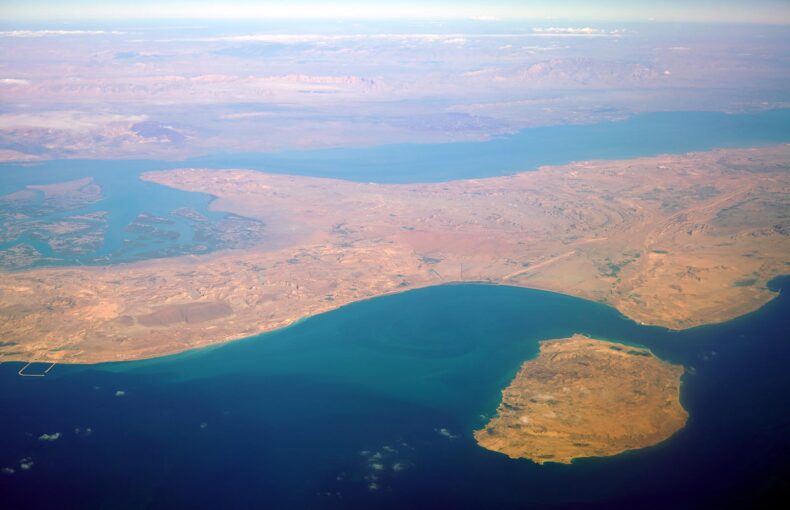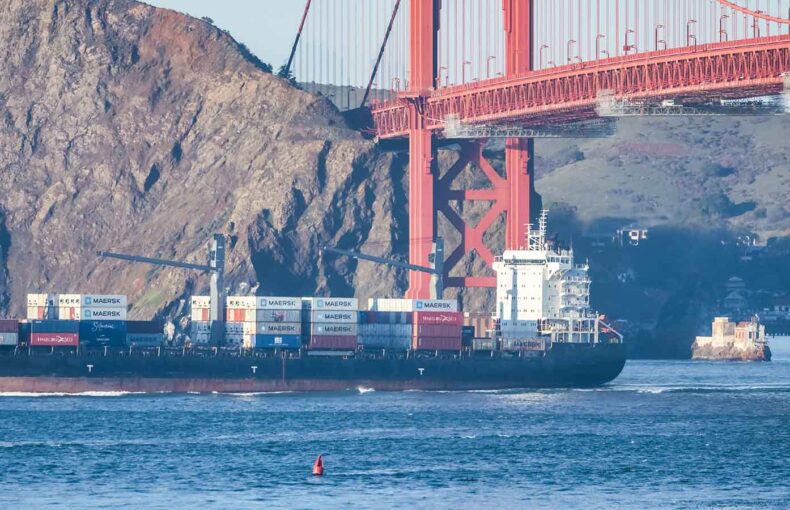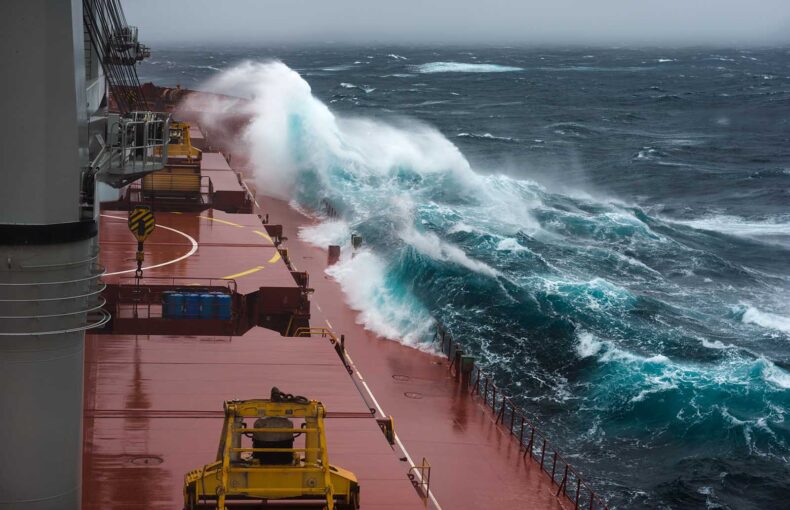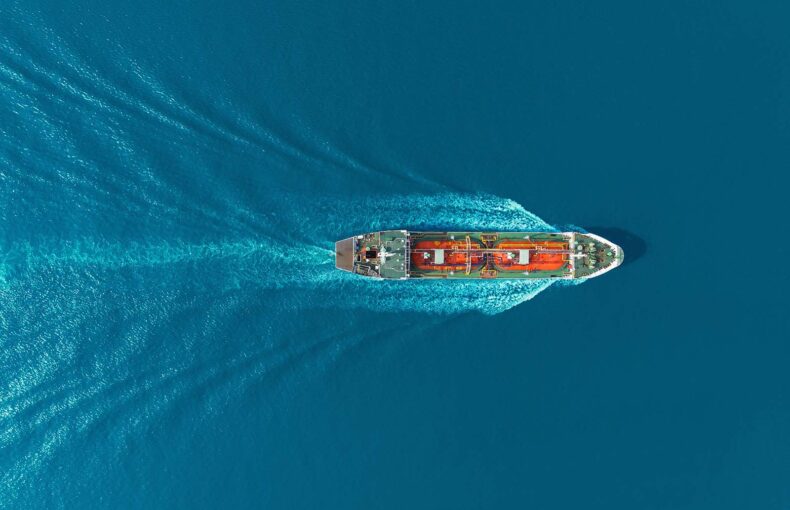10 AIS tracking data uses that could help your business
At Spire we can customize a data set to suit your needs and better manage your business challenges. Contact us today to get started.
At Spire, we’ve provided satellite AIS tracking data to a broad range of industries. Along the way, we’ve learned a lot about the many AIS data uses that provide value.
And AIS tracking data isn’t just used by maritime shipping companies; it provides value to a diverse set of companies, including:
- Commodity traders and investment firms
- Port/harbor authorities
- Government organizations and NGOs
- Companies with undersea infrastructure (energy, telecommunications)
- Illegal fishing monitoring
Recommended read – AIS tracking: your ultimate guide
Here are 10 AIS data tracking uses that are adding value by driving smarter business decisions:
1. Analyzing commodities
Commodity traders and investment firms use AIS data to analyze commodity markets. Some example uses:
- Predicting global or local commodity supply looking at ships importing to/exporting from key commodity handling ports and terminals.
- Studying ship availability. Understanding when they lack the ability to transport materials may decrease supply.
- An example for petroleum: monitor the Ship to Ship (STS) operations for regional cargo deliveries, monitoring a region where large oil tankers offload to smaller container vessels. By counting the smaller vessels and the length of time they load, you can get a rough proxy for the amount of oil moving.
- Weather data can be used to predict delays in operations, getting to the port, berthing, sailing or loading/discharging cargo.
- Voyage data combined with derived cargo estimates provide a global picture of trade in non-boxed commodities such as Crude oil, refined products, gas, iron, coal, and grain.
Some commodity investors have developed unique, proprietary methods for analyzing and applying AIS data.
2. Monitoring illegal activity and compliance
AIS tracking data can be helpful for government and non-government organizations that track maritime compliance issues. Example uses:
- Knowing when fishing vessels are in no-fishing zones.
- Getting alerted when any vessel enters certain restricted areas.
- Using AIS data to notice when AIS designations change (vessels practicing deception may switch this off).
- Using AIS data to automatically tell when a ship has deviated from its predicted route. For example, illegal fishing vessels can be spotted by their starts and stops, and unique movements. Using APIs, you can create custom code to automatically alert for unusual behaviors. AIS can also be fused with other data layers like SAR imaging to combat illegal activity on the high-seas.
- Studying industry-wide or region-wide activity for academic or government-funded studies. This data can be used to estimate global statistics, such as pollution, worldwide fuel usage, changing trade patterns, etc.
3. Analyzing emissions
AIS is used to help determine ship/fleet emissions, miles-traveled when combined with other data, such as:
- Ship type and known emissions’ characteristics.
- The Load weight of ships (based on AIS draft data).
- Ocean currents and other weather data.
- Known changes to emissions based on ship age or age of engine equipment.
4. Optimizing fuel efficiency
Optimizing fuel efficiency can be an important part of maximizing profit and remaining competitive. Using AIS data can allow you to:
- Determine the actual fuel efficiency achieved by specific ships or ship types by tracking miles travels, ship weight, and cargo weight (using draft).
- Use a combination of AIS and weather data to get even more precise estimates.
- Find the most fuel-efficient cruising speed for older ships. (This can be hard to determine due to changes caused by wear and tear and equipment replacement.)
5. Analyzing maritime product performance
Maritime product manufacturers can use AIS data to study how their products perform over long time periods. Example uses:
- Analyzing a ship coating product by looking at the differences between ships that traveled very saline waters and those that took low-saline routes.
- Analyze differences in performance between very cold and less cold routes.
- Testing how a new engine or other parts of equipment change a ship’s fuel usage.
6. Informing investment decisions
AIS data can be used as an additional data source when making general investment decisions. Examples:
- Gathering data about specific corporations, like: How much are they shipping? How have their patterns changed over time? Are changes in a company’s shipping patterns predictive of stock price movements?
- For maritime insurance companies, getting a detailed look at the extent and nature of the activities of clients or potential clients.
Download a free sample
Try our data with your application.
7. Aiding fleet management
AIS data can be an important tool for fleet management. Example uses include:
- Building a real-time dashboard that shows your vessel locations.
- Using port/lock wait times to adjust routes or ship speed.
- Using predictive algorithms to see where ships will likely be in the next period of their voyage. Predicting ETA and operational windows allow ship operators to increase/decrease speed to meet contract dates and reduce port berth costs, etc.
- Planning services/maintenance for when multiple ships will be in the same location.
- Creating tables/graphs for management purposes that break up fleet time by different segments (sea passage, maneuvering, anchoring, mooring).
- Setting up automated alerts for repairs/maintenance based on mileage tracking.
8. Improving shipping/routing strategies
Historical AIS data stretches back years, giving you access to data from millions of trips. This data is a treasure trove that, when looked at from different angles, can yield interesting insights.
Ways to use AIS to improve strategies:
- Using weather and sea conditions to improve routing and optimize fuel consumption, port congestion and canal delays are key to route planning from a speed perspective as just in time arrivals save a lot of money compared to speeding fast and then waiting in anchorage for pilots or berthing slot.
- For ship owners/brokers, studying ship availability can expose opportunities for new markets and areas of investment.
- Create your own machine learning program that takes the specific data inputs that are important to you and helps predict ETAs and aid other cos decisions.
- Using AIS data APIs, create a custom voyage optimization program that takes into account many data points (optimal cruising speed, weather, current data, time of year, port/canal congestion, tonnage/draft). Voyage optimization science is still in its infancy but the data is there for companies who want to build proprietary systems.
9. Understanding port/lock traffic
AIS can be used to understand current and historical traffic in crowded areas like ports and locks. This is of obvious help to shipping companies, but it may also help port/lock owners and other maritime-adjacent companies that occasionally have a need for traffic data.
Example historical AIS uses:
- Port/locks authorities can quickly access historical AIS data to decide when to schedule an emergency repair.
- Ship repair companies using predicted ship routes to be more efficient in scheduling their current and near-future repairs.
- Mapping out port berth locations and communicating when ships are berthed to port and ship operators.
- Allowing ships to make last-minute adjustments to routes based on an area being crowded or not crowded.
10. Aid planning of construction projects
AIS data can help with planning construction projects done by utility/infrastructure owners or owners of ports/locks.
Example uses:
- Planning the best season or times of day to do work by studying historical traffic data.
- For companies that use undersea infrastructure, traffic patterns can be a factor in where and when to install infrastructure, and when to repair it.
- Analyzing the work being done. For example, harbor dredging may be analyzed by knowing the distance the dredger has traveled and the characteristics of the soil being moved.
- Using a combination of AIS data and weather data to more safely schedule crew transport in dangerous areas (like an offshore wind farm).
Premium Data Samples
Spire also offers industry-focused, premium data set downloads. These data samples are tailored to specific industries – oil, fishing, dry bulk, container, and liquid gas vessel tracking. Our premium data sets are an easy way to experiment with our data and see first-hand the impacts data and predictive analytics can have on your business. Contact us for more information about our data, services, and resources, we’re always happy to help.
Have questions?
Want to know how your business might best make use of satellite AIS data? Learn more about our Maritime Data
Download a free sample
Try our data with your application.
 Written by
Written by


